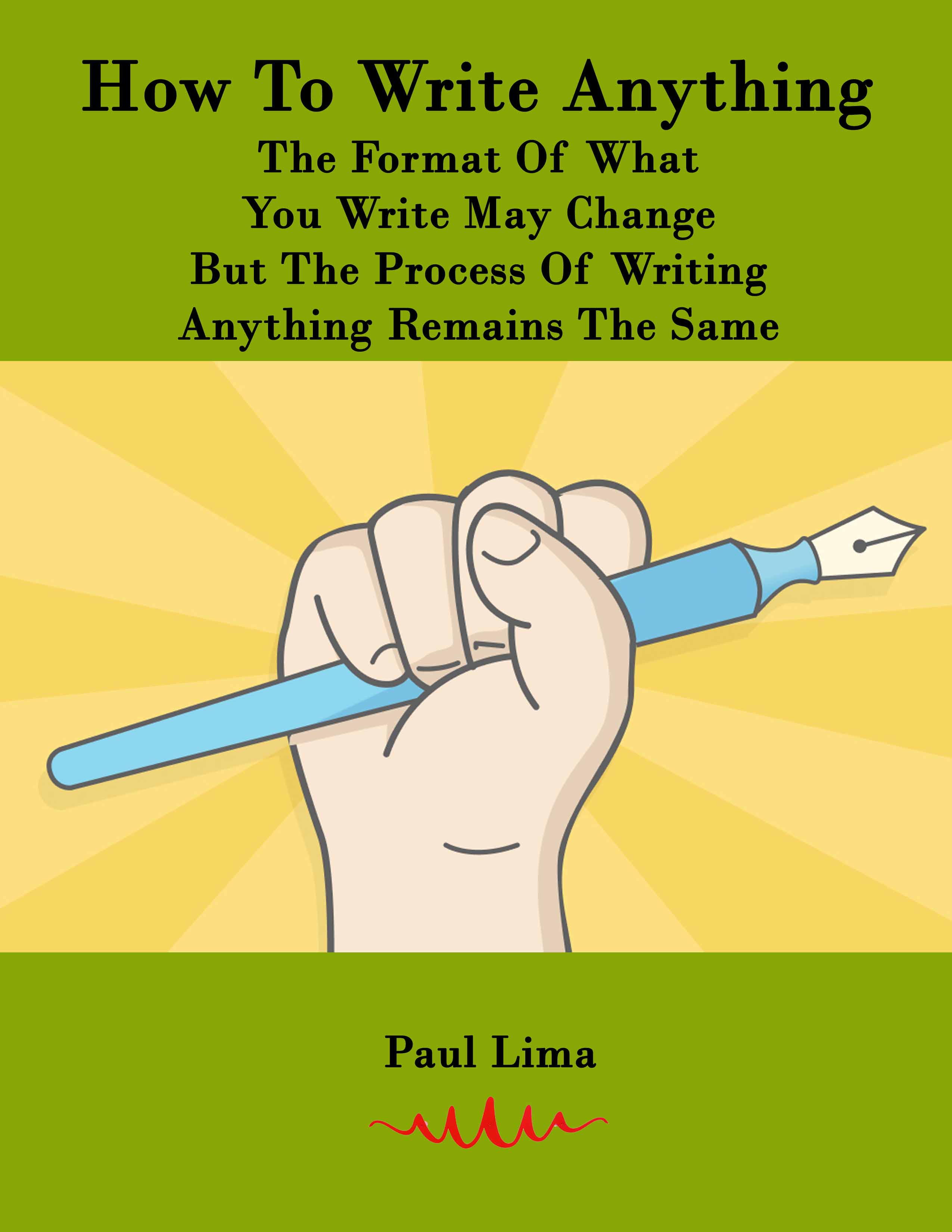 |
PaulLima.com
|
|
How
To Write Anything Introduction to How
To Write Anything So while I haven't written everything, I've written many things. The fact is that you can't read this book and go forth and write anything if you are not familiar with the format or structure of the document that you want to write--be it non-fiction or fiction. For instance, if you want to write a report, you do so using the methods in this book. However, you have to know how to structure reports. The same is applicable to email, social media content, articles, promotional content, case studies, reports, white papers, PowerPoint presentations, speeches, website content, short stories or novels. So some of you reading this book might still have some learning to do. However, I suspect most of you know the structure of the documents you want to produce and you will be able to immediately apply the methods outlined in the book to writing any document that you need to write. Okay, you might not apply the details of this book to writing poetry or plays. However, there is much in this book on an exercise called clustering and clustering will help you write any document, including poetry. In addition, the process outlined here will work for writing plays, but I don't address dialogue. With that in mind, read on and learn how to write most things. Or what I am calling anything. In short, when it comes to How To Write Anything, the thinking, exercises, and techniques presented in this book are for people who want to write, no matter what they want to write. "Are you sure about fiction?" I hear you ask. While the focus of this book is on writing non-fiction, the process spelled out here is applicable for writing fiction. In fact, there are sections in the book explicitly for fiction writers. "Any non-fiction?" you may ask. Absolutely. It does not matter the style you use or the type of document that you need to produce. For instance, you might write in an expository style, a style in which your purpose is used to inform or explain. You might write in a persuasive manner, state your opinion, and attempt to influence the reader. You might write in narrative style or write creative non-fiction. Or your writing may be descriptive, writing that uses the five senses to paint a picture for the reader. No matter the style, this book will work for you. No matter the type of document, How to Write Anything outlines the process you follow to eliminate the blank page and outline your document before you write. You will know what it is you want to write before you start the formal process of writing. In other words, this book will get you to the point where it is all over but the writing by showing you how to create a detailed and logical outline of any document that you want to write. Following the process spelled out here will make you a more effective and efficient writer. Determining how to write just about anything you want to write is what this book is all about. So let's get on with figuring out how to do it.... |
Contents Introduction 1 / Writer’s greatest fear? 2 / Eliminate blank page before you write 3/ Follow the Writing Process 4 / Before you begin... 5 / Pre-Writing Exercise: Freefall 6 / Brainstorming and Clustering 7 / Creating Outlines 8 / Writing Email Messages 9 / Start with purpose 10 / Proposals and Reports 11 / For Fiction Writers 12 / Active/Passive Sentences 13 / Paragraphs and Transitions 14 / Editing and Revision About the Author
Other books by Paul Lima
|
-
*
Multiple Sclerosis
and New Daily Persistent Headache
